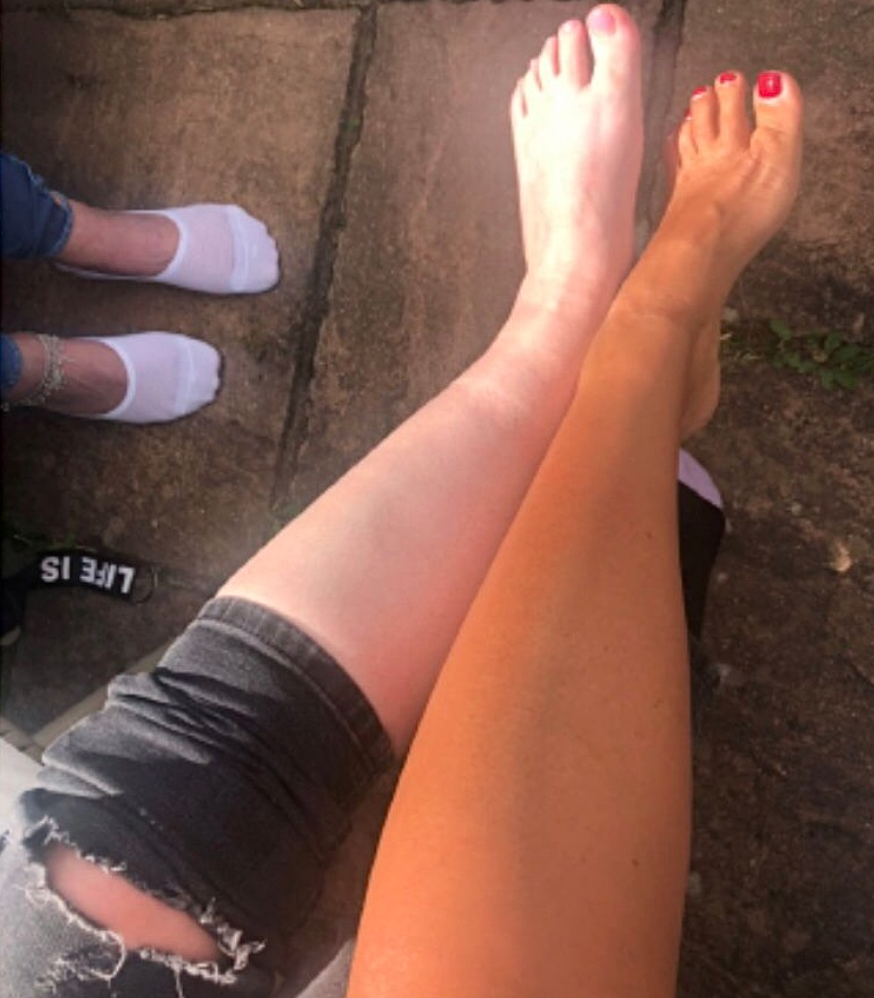I remember my free childhood days playing out with no care in the world during the summer holidays. Did I wear sunscreen? To be honest, I can’t remember. I just knew I always had a golden tan. As I got older, I used anything to get a tan. From going on sun beds and doing self-tan to using coconut oil and lemon juice with water – I always wanted that sun-kissed skin.

Things had changed when I went aboard in my early teens, I started to use suncreams. I hated the thick white stuff which would take forever to rub in, but back in the day that’s all we had. No sprays or dry oil. It would take you half an hour to apply the stuff, then you would have to wait to put your beach outfit on. At least the skin was protected. Did I reapply it at the beach? Well, we will never know. Things drastically shifted when I had kids of my own. I would buy so many different brands with the highest sun protection factor and they could not leave the hotel room without being covered in cream first. Chasing kids around the apartment and making sure it was all rubbed in was a regular routine for me.
I am very lucky I have an olive complexion and I don’t burn very easily, thanks to my dad for that. Most of my dad’s family have the same skin tone, and I often get asked if I am Spanish or Mexican. I just have good pigment genes as my husband likes to say “rhino skin”. As I got older and started travelling more, I opted to wear more sunscreen to protect my skin. I also had to realise that the complexion of my tan varied when I visited different countries. My tolerance for the sun had changed. I would start with an SPF-30 and move on to an SPF-15 and SPF-8 for my legs, gone are the days of oil and no SPF.

Yes, I love a tan but I also need to protect my skin and I certainly don’t want to be toned up looking like Madge Harvey (from the British TV show Benidorm), as my daughter would often say to me. I also have quite a few moles which I started to get checked by a dermatologist. I have had a few removed and one was precancerous, so it had to go too. The only thing the dermatologist told me was I should be using at least an SPF 30, even though I tan very easily. He did offer to come travelling with me to guide me on what to use (he was joking).

We all long for that golden tan, the sun on your face makes you feel alive and better about yourself, clothes look more vibrant on a tanned body, and the sunshine vitamin (vitamin D) is good for your health. When your skin is exposed to sunlight, it makes vitamin D from cholesterol. Sun exposure is by far the best way to boost vitamin D levels, particularly because very few foods contain significant amounts. Darker-skinned people have more melanin, a compound that protects against skin damage by reducing the amount of UVB light absorbed. Turns out that darker-skinned people need more time in sunlight to make the same amount of vitamin D as lighter-skinned people.
So, what is the danger of being exposed to the sun?
While sunlight is great for vitamin D production, too much can be dangerous.
Below are some consequences of too much sunlight:
- Sunburns: The most common harmful effect of too much sunlight. Symptoms of sunburn include redness, swelling, pain or tenderness and blisters
- Eye damage: Long-term exposure to UV light can damage the retina. This can increase the risk of eye diseases like cataracts.
- Ageing skin: Spending too long in the sun can cause your skin to age faster. Some people develop more wrinkled, loose or leathery skin.
- Skin changes: Freckles, moles and other skin changes can be a side effect of excessive sunlight exposure.
- Heat stroke: Also known as sunstroke, this is a condition in which the body’s core temperature may rise due to too much heat or sun exposure.
- Skin cancer: Too much UV light is a significant cause of skin cancer.
Advice: If you plan on spending a lot of time in the sun, make sure to avoid getting sunburned. It’s best to apply sunscreen for at least 20–30 minutes before going outside. Your exposure time should depend on how sensitive your skin is to sunlight. Note that experts recommend reapplying sunscreen every two to three hours you spend in the sun, especially if you’re sweating or bathing.

What are the types of harmful sun rays?
UV radiation from the sun includes two types of harmful rays:
- Ultraviolet A (UVA) Rays: Most common; cause premature ageing of the skin (e.g., wrinkles)
- Ultraviolet B (UVB) Rays: Most dangerous; cause sunburns
Overexposure to both types of rays can cause skin cancer. Sunscreens labelled as “broad spectrum” help protect against the effects of both UVA and UVB rays.
Advice: Aim for sunscreen with at least 30 SPF. A sunscreen’s sun protection factor (SPF) indicates how much protection the product offers against UV radiation. Sunscreens with an SPF of 30 blocks 97 per cent of the sun’s rays.
Keep in mind that manufacturers can no longer advertise sunscreens as waterproof or sweatproof. Instead, products are now labelled:
- Water Resistant: Effective for up to 40 minutes in water
- Very Water Resistant: Effective for up to 80 minutes in water
Spray-On Sunscreens Are Convenient, But Not Always Effective
I use spray-on sunscreens because I find it so much more convenient, but I will be honest I do sometimes miss certain body parts. Individuals who want to use spray-on sunscreen should make sure to use an adequate amount, rubbing it in to thoroughly cover all areas of exposed skin.
I could spend hours and hours researching so much more about sunscreens but I feel it’s a personal choice what brand you use and what SPF if any you use. We all tan differently because we are all made differently.
I enjoy the sun on my face and body, and yes, I have started using a higher SPF but has the damage already been done… who knows. As long as I get my moles checked and I don’t burn my skin I am happily enjoying the sunshine.
Be safe and do what’s right for you.
Sources used in this blog post:

